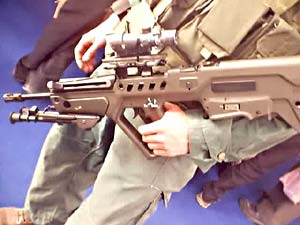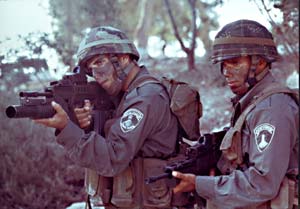Most Westerners think of the famous AK-47 Kalashnikov as being a dumb weapon for dumb people, while the "almighty" American M-16 is the weapon of choice for any respectable military force. And just as always, they are wrong.
Both of the machineguns have seen action and met each other for the first time during the Vietnam war. While the American M-16 was lighter and had a higher firing rate (at that time) than the AK-47, it often jammed in the harsh jungle conditions, leading to the loss of many lives. Besides that, its small, 20-rounds magazine meant that combined with its high firing rate, the soldier needed to replace his magazine very often, thus giving enough time for the enemy to approach and take him out of the battle.

AK-47 Kalashnikov






 hits for this news page alone since 1 February, 2004
hits for this news page alone since 1 February, 2004